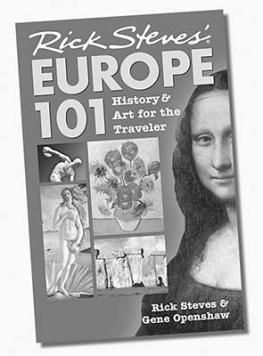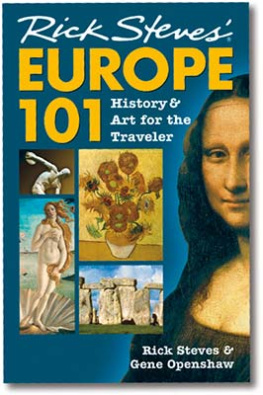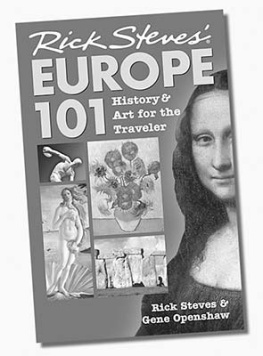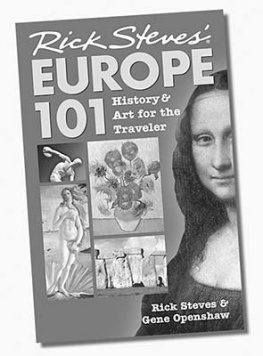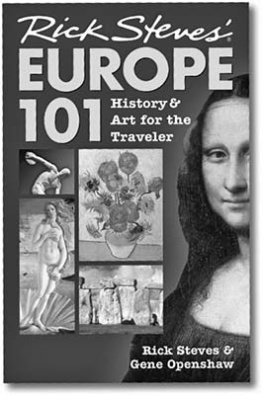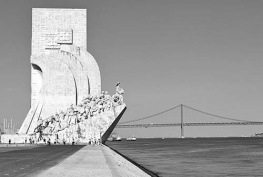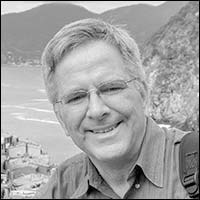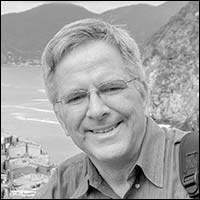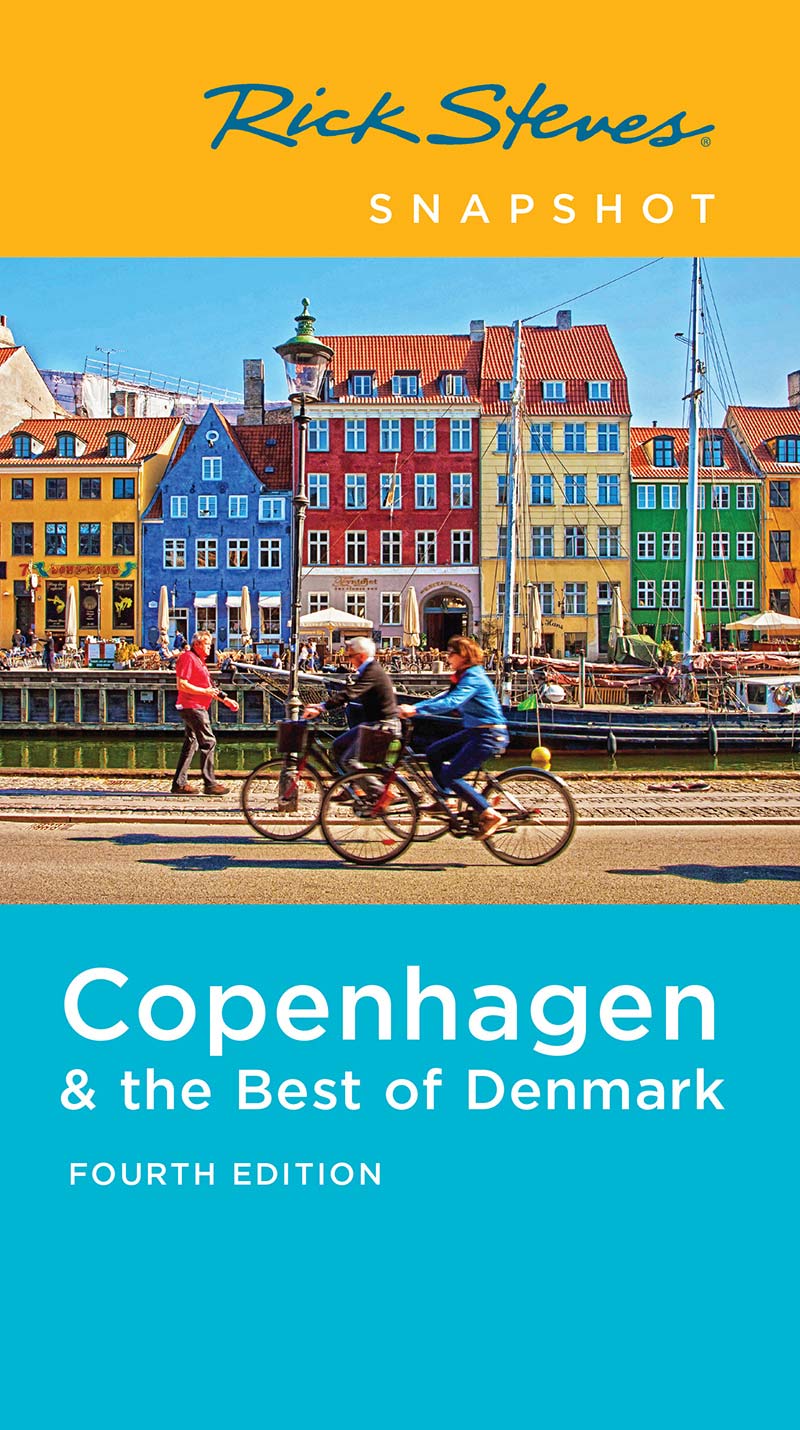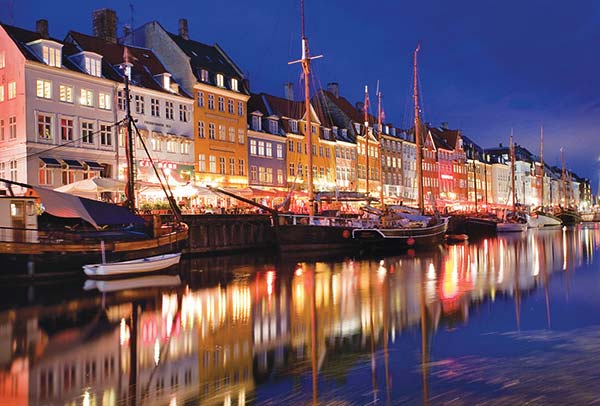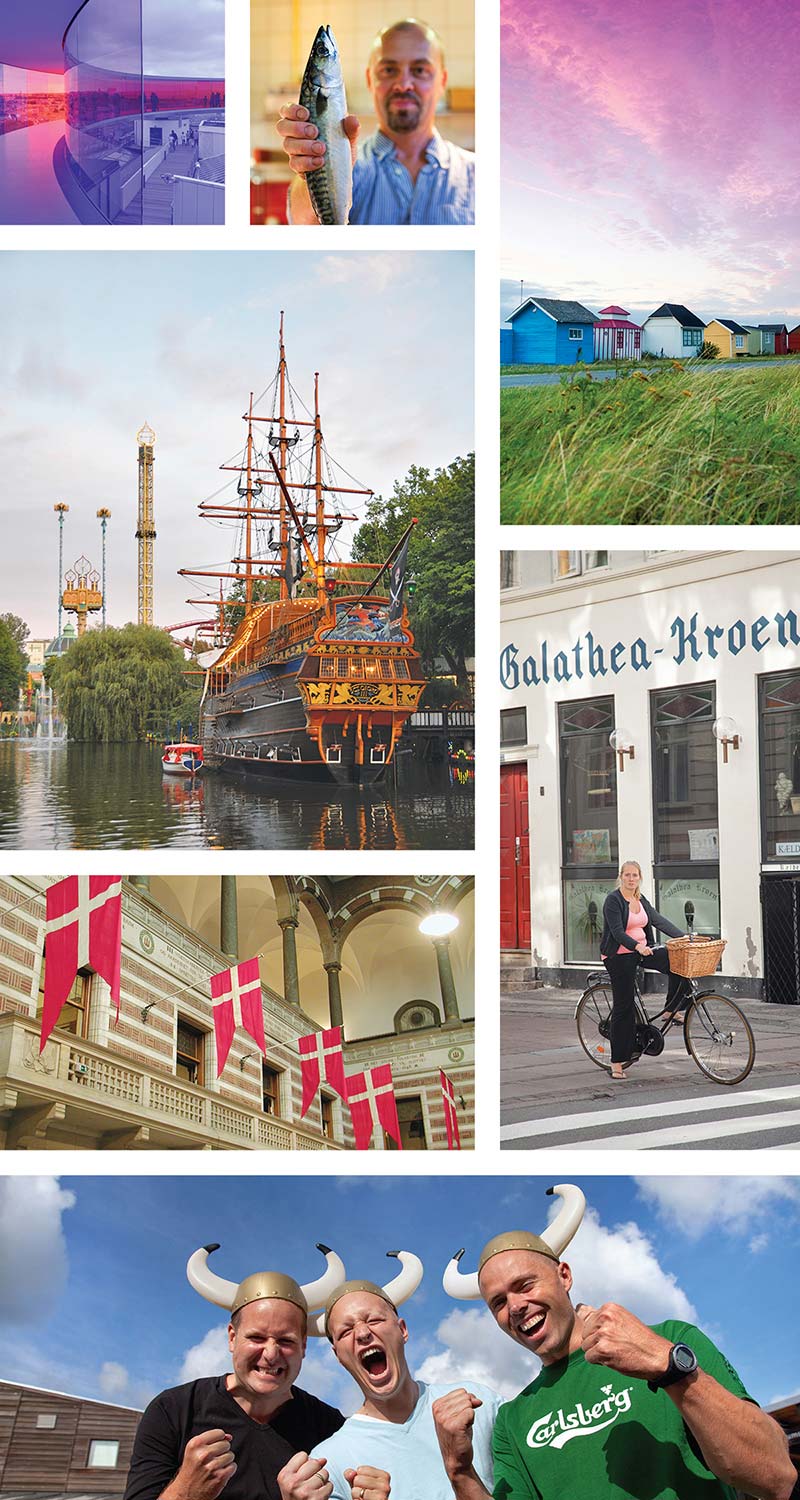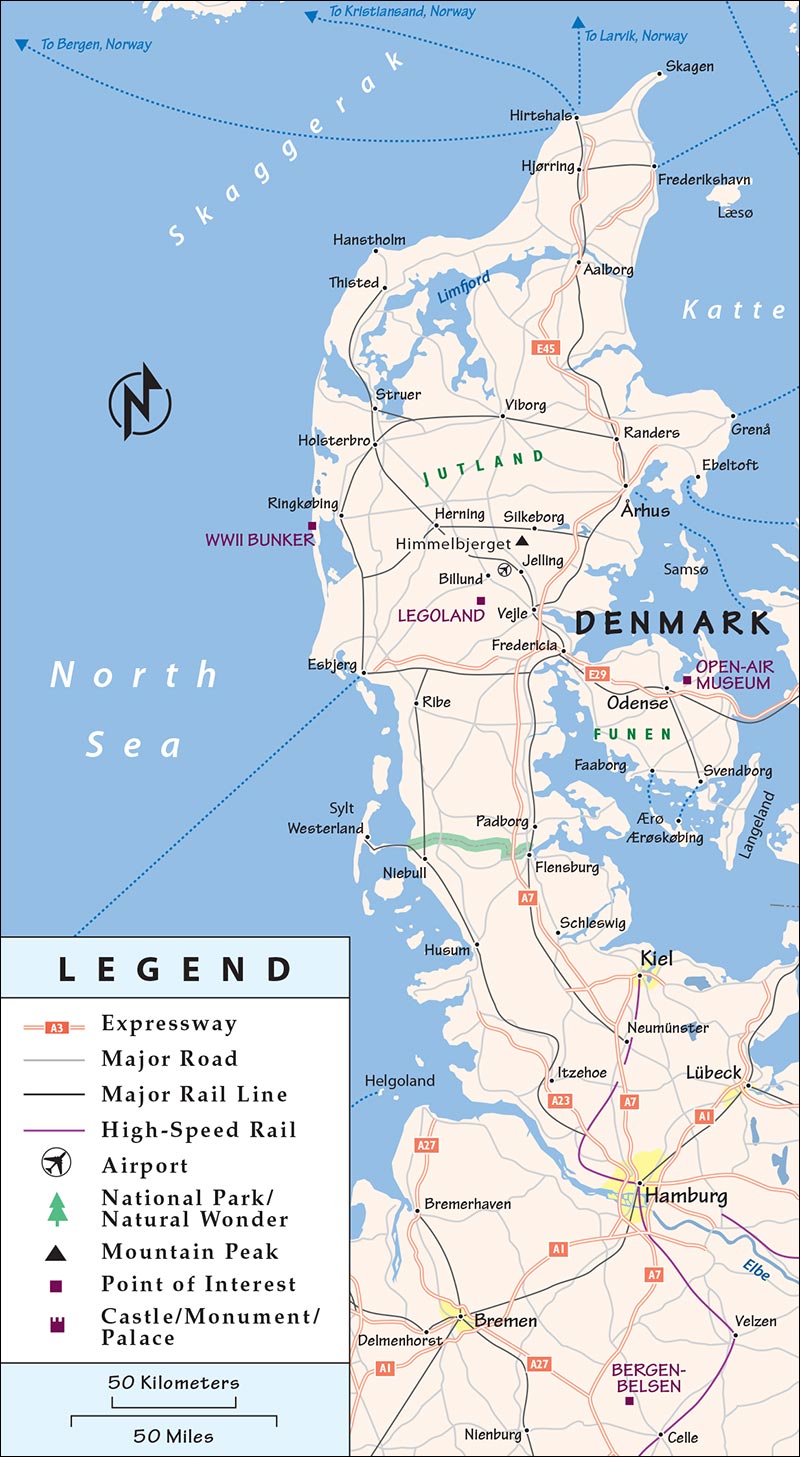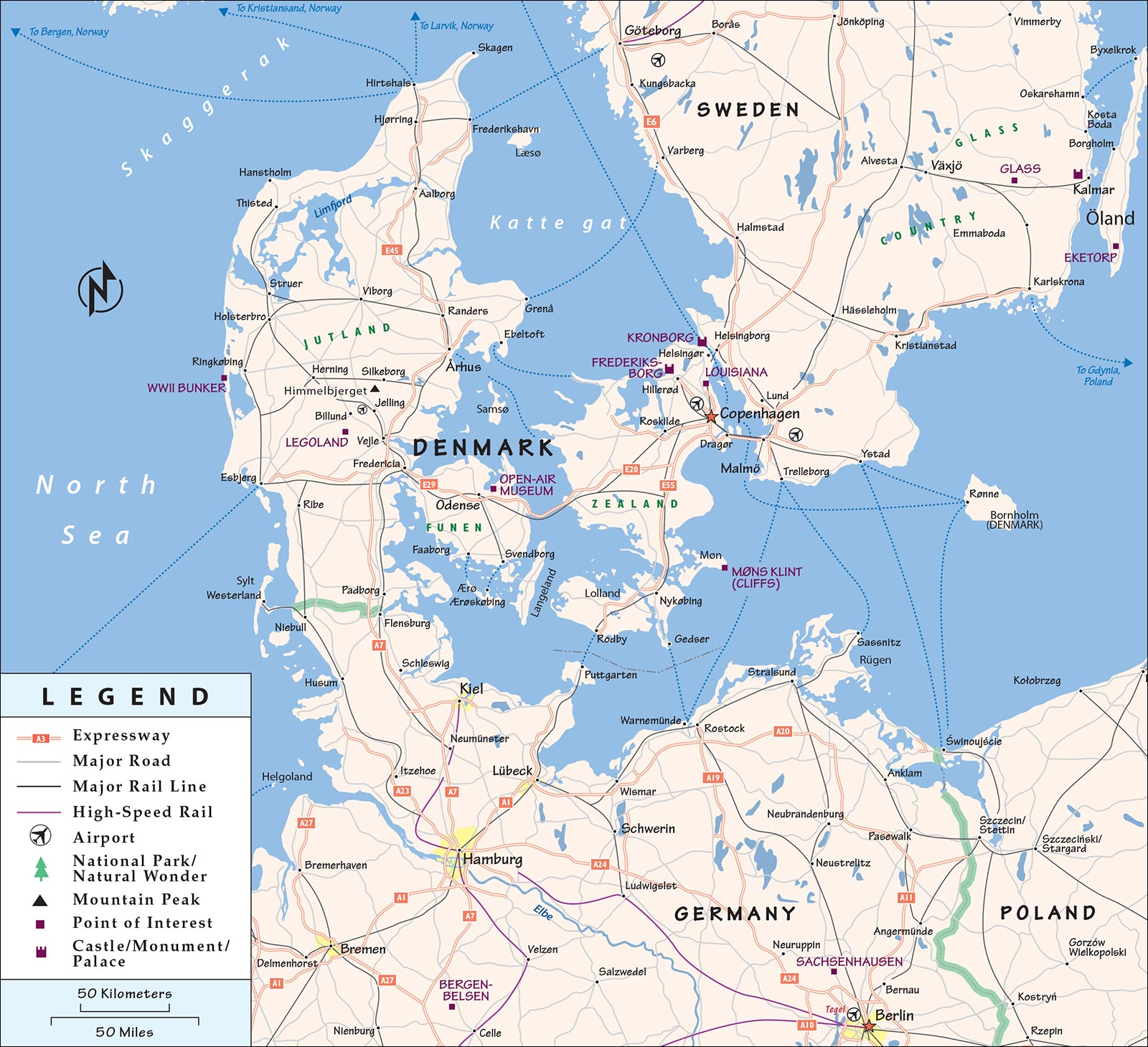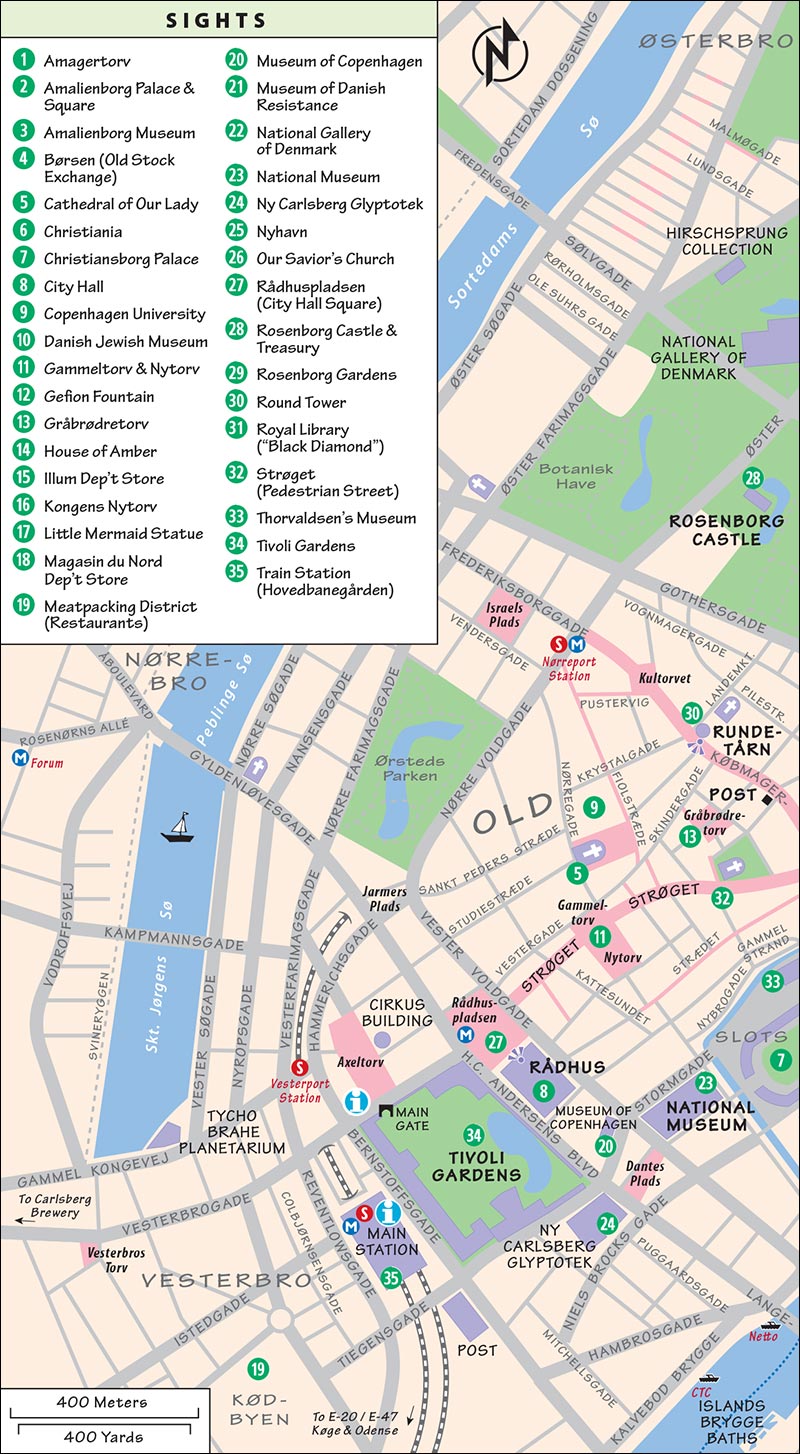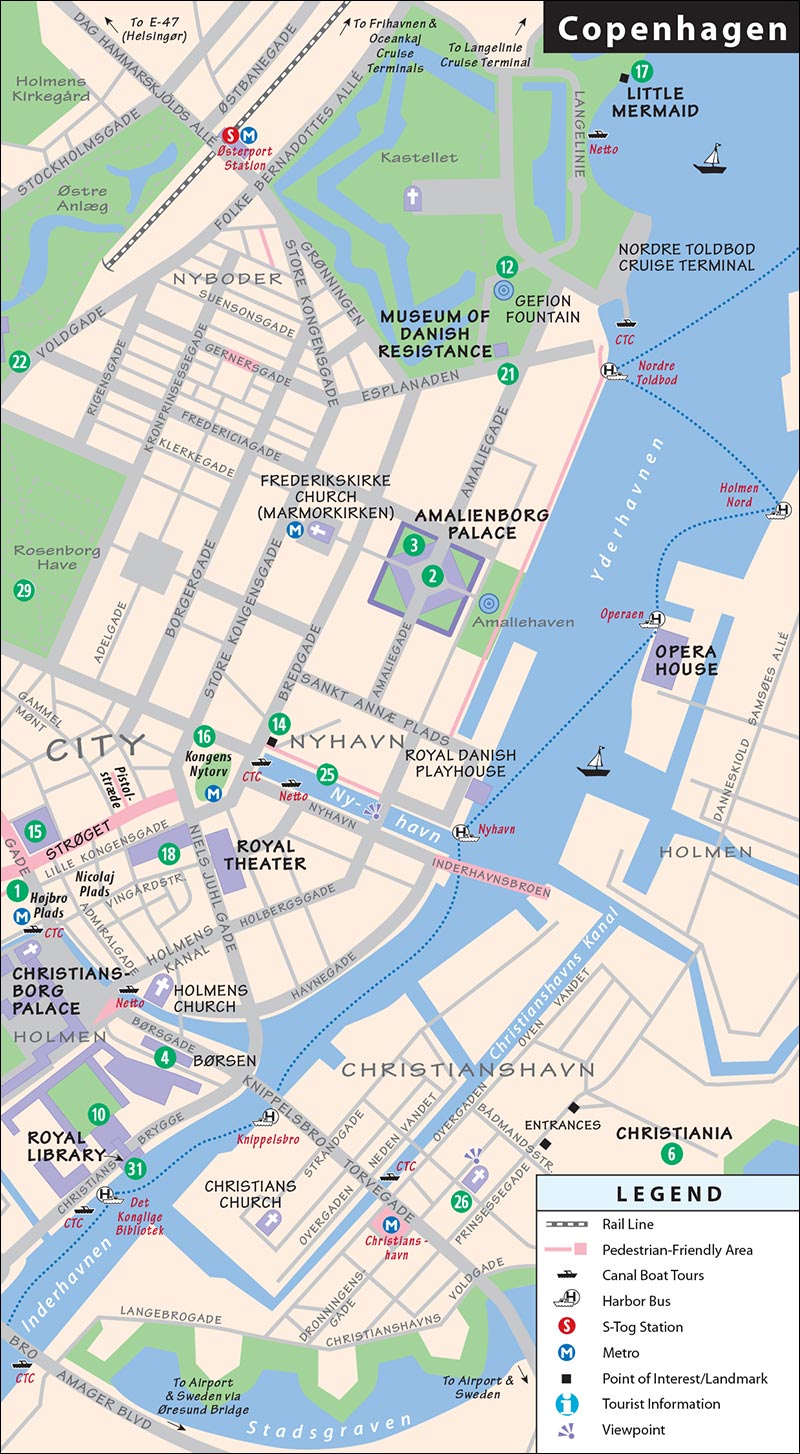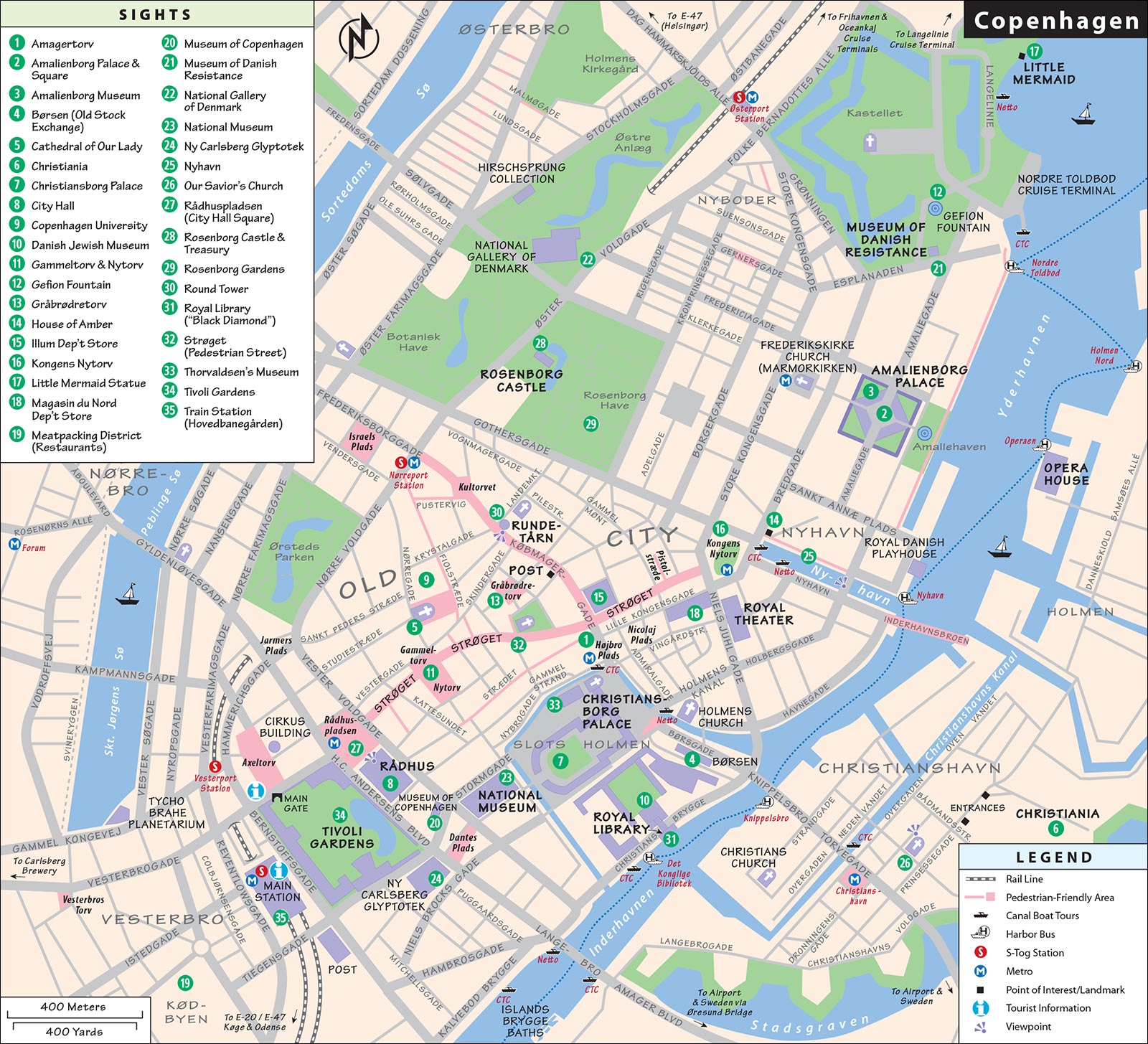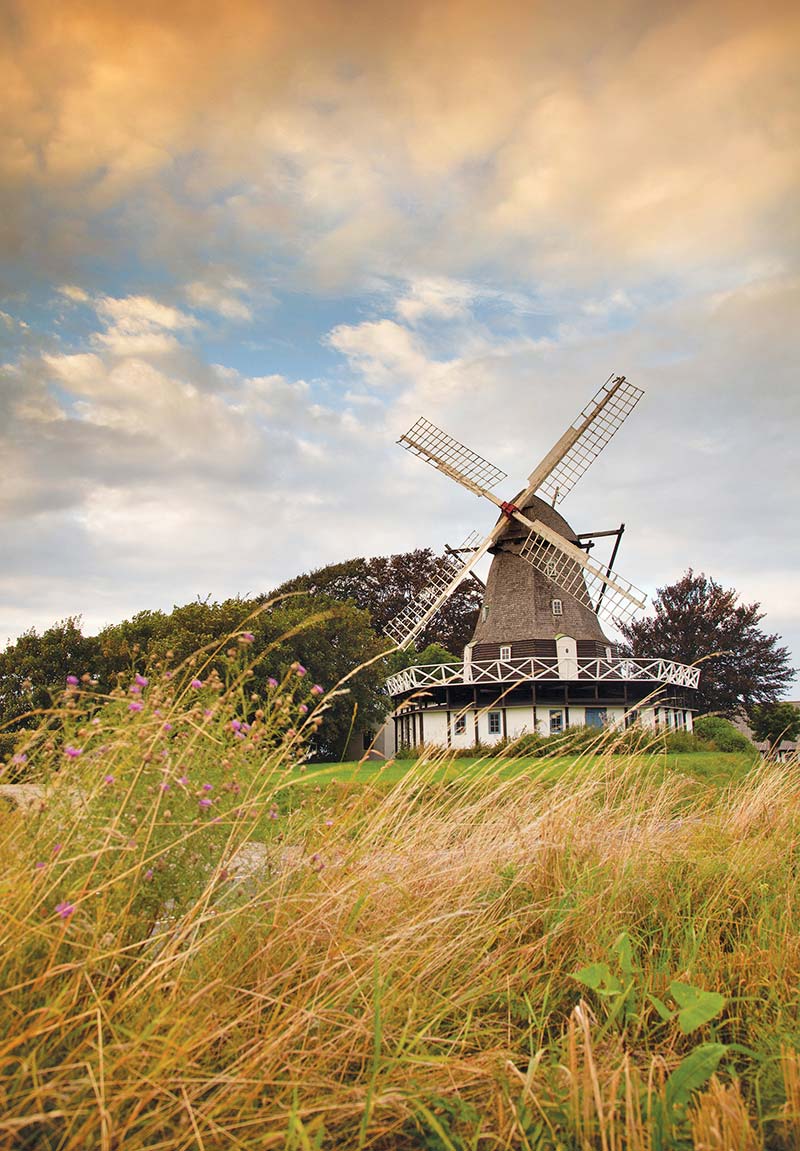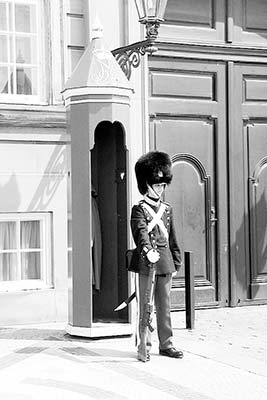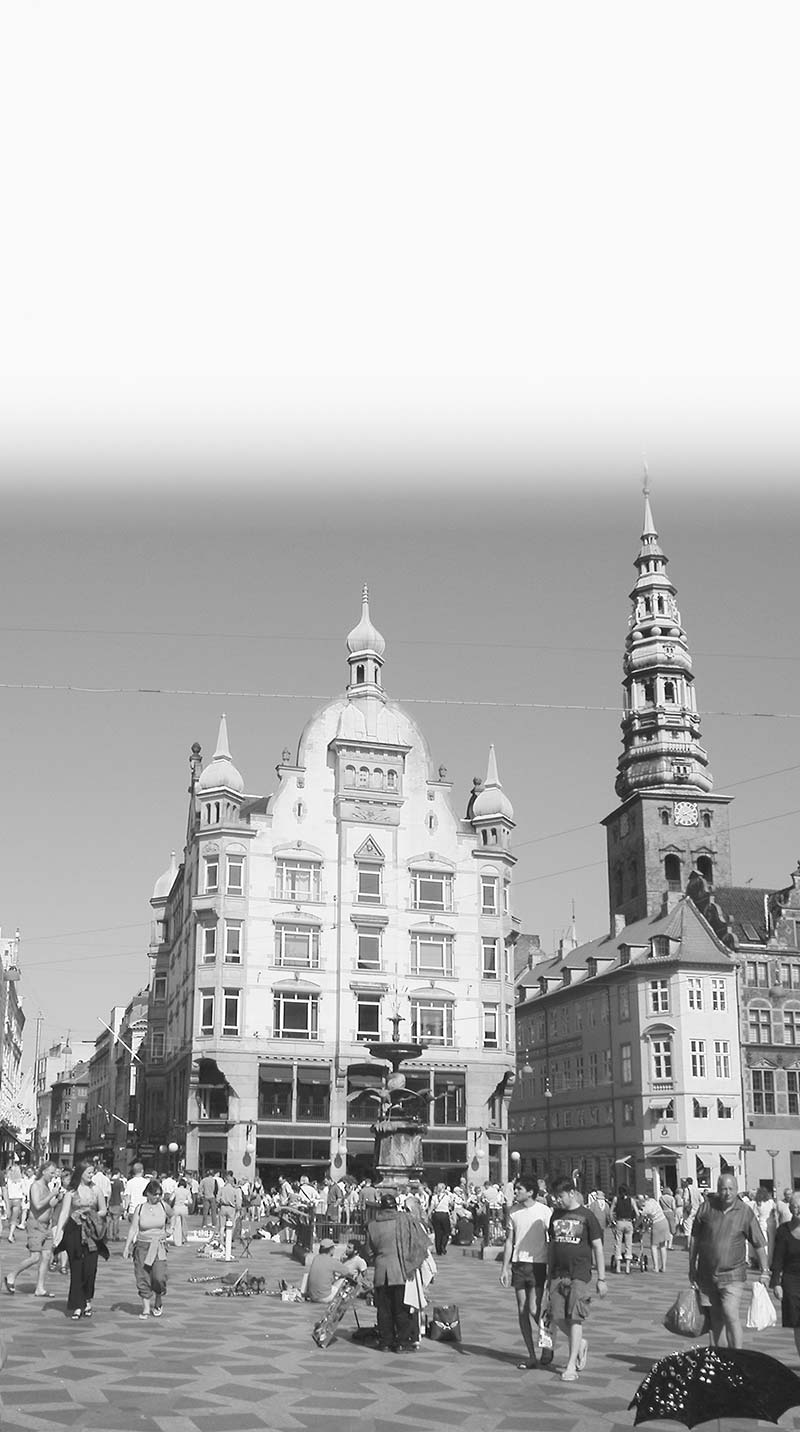Contents
Contents
Rick Steves
SNAPSHOT
Copenhagen & the Best of Denmark
This Snapshot guide, excerpted from my guidebook Rick Steves Scandinavia, introduces you to one of the most technologically advanced, yet traditional and welcoming nations in EuropeDenmark. Theres a lot more here than just Hans Christian Andersen stories, sweet breakfast pastries, and rolling farmlands. Start with the livable Danish capital, Copenhagen, where you can experience the classic Tivoli Gardens amusement park, Europes first pedestrian shopping mall, a warrior-kings Renaissance castle, and a free-spirited squatters colony. You can side-trip to nearby Roskilde to see millennium-old Viking ships, or head to Frederiksborg Castle to tour Denmarks Versailles.
Beyond the capital, make time for the rest of Denmarkrugged islands, salty harbors, and windswept sandy coasts. The isle of r is your time-warp experience back into a cozy 18th-century town and a chance to unwind in an utterly authentic Danish environment. To complete your visit, check out Hans Christian Andersens house in Odense and stop in Denmarks second cityAarhuswith its open-air folk museum and wildly contemporary art museum.
To help you have the best trip possible, Ive included the following topics in this book:
Planning Your Time, with advice on how to make the most of your limited time
Orientation, including tourist information (abbreviated as TI), tips on public transportation, local tour options, and helpful hints
Sights with ratings:
Dont miss
Try hard to see
Worthwhile if you can make it
No ratingWorth knowing about
Sleeping and Eating, with good-value recommendations in every price range
Connections, with tips on trains, buses, boats, and driving
Practicalities, near the end of this book, has information on money, staying connected, hotel reservations, transportation, and more.
To travel smartly, read this little book in its entirety before you go. Its my hope that this guide will make your trip more meaningful and rewarding. Traveling like a temporary local, youll get the absolute most out of every mile, minute, and dollar.
God rejse! Happy travels!
Danmark
Denmark is by far the smallest of the Scandinavian countries, but in the 16th century, it was the largest: At one time, Denmark ruled all of Norway and the three southern provinces of Sweden. Danes are proud of their mighty history and are the first to remind you that they were a lot bigger and a lot stronger in the good old days. And yet, theyre a remarkably mellow, well-adjusted lotorganized without being uptight, and easygoing with a delightfully wry sense of humor.
In the 10th century, before its heyday as a Scan-superpower, Denmark was, like Norway and Sweden, home to the Vikings. More than anything else, these fierce warriors were known for their great shipbuilding, which enabled them to travel far. Denmarks Vikings journeyed west to Great Britain and Ireland (where they founded Dublin) and brought back various influences, including Christianity.
Denmark is composed of many islands, a peninsula (Jutland) that juts up from northern Germany, Greenland, and the Faroe Islands. The two main islands are Zealand (Sjlland in Danish), where Copenhagen is located, and Funen (Fyn in Danish), where Hans Christian Andersen (or, as Danes call him, simply H. C.) was born. Out of the hundreds of smaller islands, ship-in-bottle-cute ro is my favorite. The Danish landscape is gentle compared with the dramatic fjords, mountains, and vast lakes of other Scandinavian nations. Danes (not to mention Swedes and Norwegians) like to joke about the flat Danish landscape, saying that you can stand on a case of beer and see from one end of the country to the other. Denmarks highest point in Jutland is only 560 feet above sea level, and no part of the country is more than 30 miles from the sea.
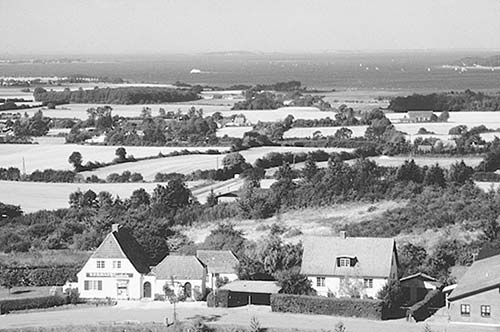
In contrast to the rest of Scandinavia, much of Denmark is arable. The landscape consists of rolling hills, small thatched-roof farmhouses, beech forests, and whitewashed churches with characteristic stairstep gables. Red brick, which was a favorite material of the nation-building King Christian IV, is everywhereespecially in major civic buildings such as city halls and train stations.
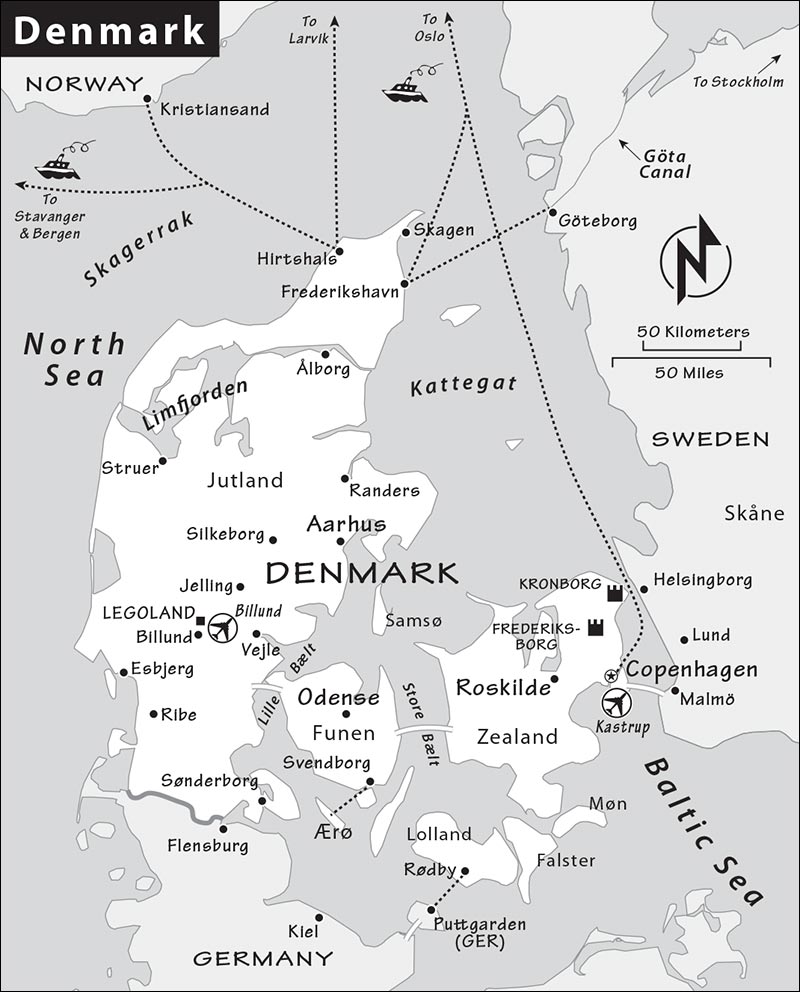
Like the other Scandinavian countries, Denmark is predominantly Lutheran, but only a small minority attend church regularly. The majority are ethnic Danes, and many (but certainly not all) of them have the stereotypical blond hair and blue eyes. Two out of three Danes have last names ending in -sen. The assimilation of ethnic groups into this homogeneous society, which began in earnest in the 1980s, is a source of some controversy. But in general, most Danes have a live-and-let-live attitude and enjoy one of the highest standards of living in the world. Taxes are high in this welfare state, but education is free and medical care highly subsidized. Generous parental leave extends to both men and women.


